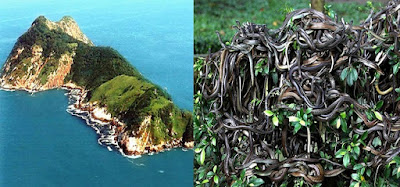Mono lisa
Monolisa by Leonardo da vinci
Leonardo da Vinci began painting the Mona Lisa in 1503 or 1504 in Florence, Italy.[20] Although the Louvre states that it was "doubtless painted between 1503 and 1506",[4] the art historian Martin Kemp says there are some difficulties in confirming the actual dates with certainty.[10]According to Leonardo's contemporary, Giorgio Vasari, "after he had lingered over it four years, [he] left it unfinished".[6] Leonardo, later in his life, is said to have regretted "never having completed a single work".[21]
In 1516, Leonardo was invited by King François I to work at the Clos Lucé near the king's castle in Amboise. It is believed that he took the Mona Lisa with him and continued to work after he moved to France.[18] Art historian Carmen C. Bambach has concluded that da Vinci probably continued refining the work until 1516 or 1517.[22]
Upon his death, the painting was inherited with other works by his pupil and assistant Salaì.[10] Francis I bought the painting for 4,000 écus and kept it at Palace of Fontainebleau, where it remained until Louis XIV moved the painting to the Palace of Versailles. After the French Revolution, it was moved to the Louvre, but spent a brief period in the bedroom of Napoleon in the Tuileries Palace.
During the Franco-Prussian War (1870–71) it was moved from the Louvre to the Brest Arsenal.[23] During World War II, the painting was again removed from the Louvre and taken safely, first to Château d'Amboise, then to the Loc-Dieu Abbey and Château de Chambord, then finally to the Ingres Museum in Montauban.
In December 2015, it was reported that French scientist Pascal Cotte had found a hidden portrait underneath the surface of the painting using reflective light technology.[24] The portrait is an underlying image of a model looking off to the side.[25] Having been given access to the painting by Louvre in 2004, Cotte spent ten years using layer amplification methods to study the painting.[24] According to Cotte, the underlying image is Leonardo's original Mona Lisa.[24][26]
Theft and vandalism
The use of bulletproof glass has shielded the Mona Lisa from subsequent attacks. In April 1974, a woman, upset by the museum's policy for disabled people, sprayed red paint at it while it was being displayed at the Tokyo National Museum.[35] On 2 August 2009, a Russian woman, distraught over being denied French citizenship, threw a ceramic teacup purchased at the Louvre; the vessel shattered against the glass enclosure.[36][37] In both cases, the painting was undamaged.
In 1956, part of the painting was damaged when a vandal threw acid at it.[33] On 30 December of that year, a speck of pigment near the left elbow was damaged when a rock was thrown at the painting, which was later restored.[34]French poet Guillaume Apollinaire, who had once called for the Louvre to be "burnt down", came under suspicion and was arrested and imprisoned. Apollinaire implicated his friend Pablo Picasso, who was brought in for questioning. Both were later exonerated.[28][29] Two years later the thief was found. Louvre employee Vincenzo Peruggia had stolen the Mona Lisa by entering the building during regular hours, hiding in a broom closet, and walking out with it hidden under his coat after the museum had closed.[12] Peruggia was an Italian patriot who believed da Vinci's painting should have been returned for display in an Italian museum. Peruggia may have also been motivated by a friend whose copies of the original would significantly rise in value after the painting's theft. A later account suggested Eduardo de Valfierno had been the mastermind of the theft and had commissioned forger Yves Chaudron to create six copies of the painting to sell in the U.S. while the location of the original was unclear.[30] However, the original painting remained in Europe. After having kept the Mona Lisa in his apartment for two years, Peruggia grew impatient and was caught when he attempted to sell it to directors of the Uffizi Gallery in Florence. It was exhibited in the Uffizi Gallery for over two weeks and returned to the Louvre on 4 January 1914.[31] Peruggia served six months in prison for the crime and was hailed for his patriotism in Italy.[29] Before its theft, the Mona Lisa was not widely known outside the art world. It was not until the 1860s that some critics, a thin slice of the French intelligentsia, began to hail it as a masterwork of Renaissance painting.[32]
In 1956, part of the painting was damaged when a vandal threw acid at it.[33] On 30 December of that year, a speck of pigment near the left elbow was damaged when a rock was thrown at the painting, which was later restored.[34]French poet Guillaume Apollinaire, who had once called for the Louvre to be "burnt down", came under suspicion and was arrested and imprisoned. Apollinaire implicated his friend Pablo Picasso, who was brought in for questioning. Both were later exonerated.[28][29] Two years later the thief was found. Louvre employee Vincenzo Peruggia had stolen the Mona Lisa by entering the building during regular hours, hiding in a broom closet, and walking out with it hidden under his coat after the museum had closed.[12] Peruggia was an Italian patriot who believed da Vinci's painting should have been returned for display in an Italian museum. Peruggia may have also been motivated by a friend whose copies of the original would significantly rise in value after the painting's theft. A later account suggested Eduardo de Valfierno had been the mastermind of the theft and had commissioned forger Yves Chaudron to create six copies of the painting to sell in the U.S. while the location of the original was unclear.[30] However, the original painting remained in Europe. After having kept the Mona Lisa in his apartment for two years, Peruggia grew impatient and was caught when he attempted to sell it to directors of the Uffizi Gallery in Florence. It was exhibited in the Uffizi Gallery for over two weeks and returned to the Louvre on 4 January 1914.[31] Peruggia served six months in prison for the crime and was hailed for his patriotism in Italy.[29] Before its theft, the Mona Lisa was not widely known outside the art world. It was not until the 1860s that some critics, a thin slice of the French intelligentsia, began to hail it as a masterwork of Renaissance painting.[32]
Aesthetics
The depiction of the sitter in three-quarter profile is similar to late 15th-century works by Lorenzo di Credi and Agnolo di Domenico del Mazziere.[38] Zöllner notes that the sitter's general position can be traced back to Flemish models and that "in particular the vertical slices of columns at both sides of the panel had precedents in Flemish portraiture."[39] Woods-Marsden cites Hans Memling's portrait of Benededetto Portinari (1487) or Italian imitations such as Sebastiano Mainardi's pendant portraits for the use of a loggia, which has the effect of mediating between the sitter and the distant landscape, a feature missing from Leonardo's earlier portrait of Ginevra de' Benci.[40]he Mona Lisa bears a strong resemblance to many Renaissance depictions of the Virgin Mary, who was at that time seen as an ideal for womanhood.[38]
The woman sits markedly upright in a "pozzetto" armchair with her arms folded, a sign of her reserved posture. Her gaze is fixed on the observer. The woman appears alive to an unusual extent, which Leonardo achieved by his method of not drawing outlines (sfumato). The soft blending creates an ambiguous mood "mainly in two features: the corners of the mouth, and the corners of the eyes".[41]
Mona Lisa has no clearly visible eyebrows or eyelashes. Some researchers claim that it was common at this time for genteel women to pluck these hairs, as they were considered unsightly.[44][45] In 2007, French engineer Pascal Cotte announced that his ultra-high resolution scans of the painting provide evidence that Mona Lisa was originally painted with eyelashes and with visible eyebrows, but that these had gradually disappeared over time, perhaps as a result of overcleaning.[46] Cotte discovered the painting had been reworked several times, with changes made to the size of the Mona Lisa's face and the direction of her gaze. He also found that in one layer the subject was depicted wearing numerous hairpins and a headdress adorned with pearls which was later scrubbed out and overpainted.[47]The painting was one of the first portraits to depict the sitter in front of an imaginary landscape, and Leonardo was one of the first painters to use aerial perspective.[43] The enigmatic woman is portrayed seated in what appears to be an open loggia with dark pillar bases on either side. Behind her, a vast landscape recedes to icy mountains. Winding paths and a distant bridge give only the slightest indications of human presence. Leonardo has chosen to place the horizon line not at the neck, as he did with Ginevra de' Benci, but on a level with the eyes, thus linking the figure with the landscape and emphasizing the mysterious nature of the painting.[40]
There has been much speculation regarding the painting's model and landscape. For example, Leonardo probably painted his model faithfully since her beauty is not seen as being among the best, "even when measured by late quattrocento (15th century) or even twenty-first century standards."[48] Some art historians in Eastern art, such as Yukio Yashiro, argue that the landscape in the background of the picture was influenced by Chinese paintings,[49] but this thesis has been contested for lack of clear evidence.[49]
Research in 2003 by Professor Margaret Livingstone of Harvard University said that Mona Lisa's smile disappears when looked with direct vision, known as foveal, because of the way the human eye processes visual information it is less suited to pick up shadows directly, however peripheral vision can pick up shadows well.[50]
Research in 2008 by a geomorphology professor at Urbino University and an artist-photographer revealed likenesses of Mona Lisa's landscapes to some views in the Montefeltro region in the Italian provinces of Pesaro, Urbino and Rimini.[51][52]



Comments
Post a Comment
Your suggestions